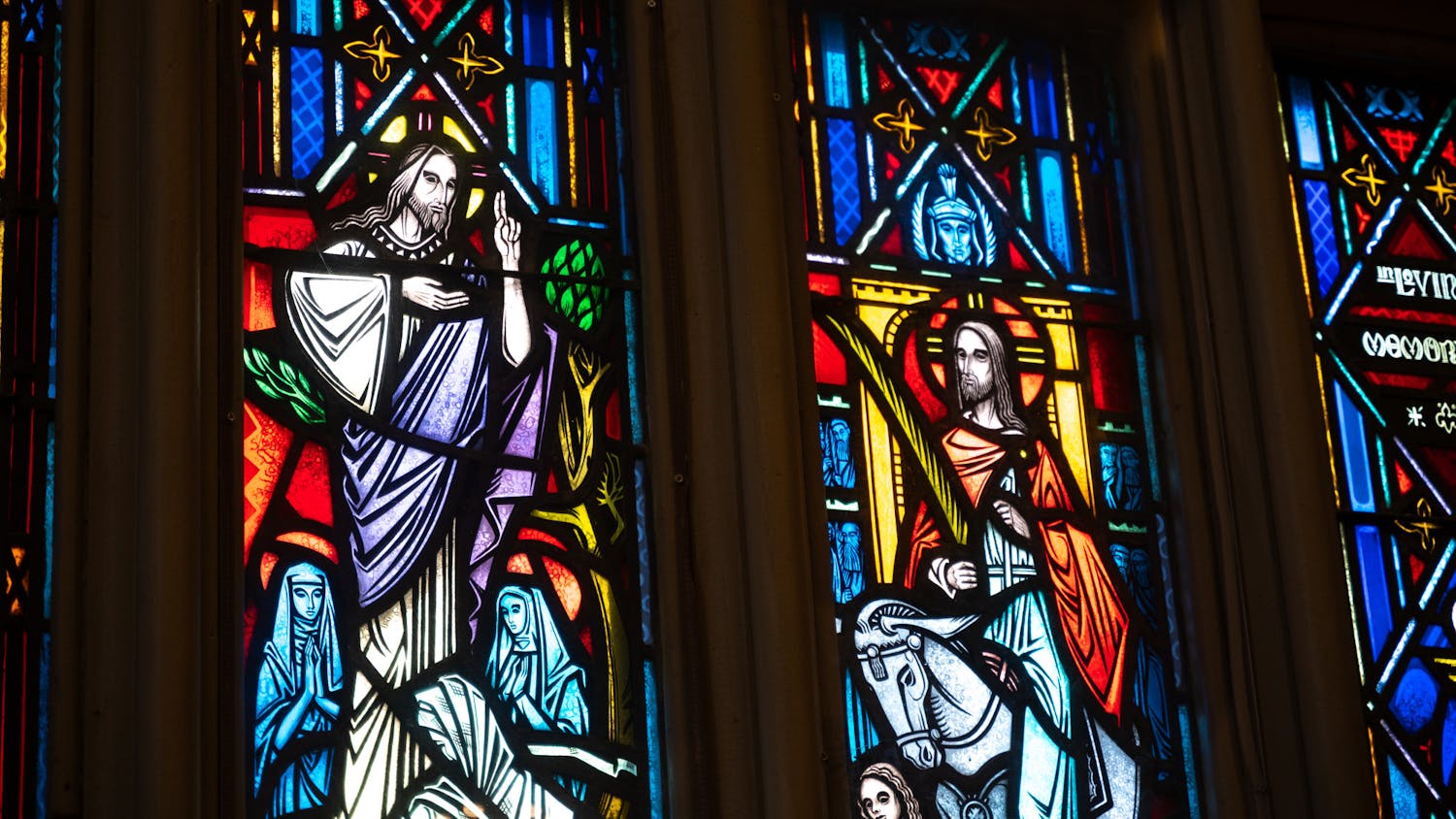It has been said that the attacks on America will be a defining moment for our generation, the moment we will all remember experiencing. Thirty years from now we'll tell other generations where we were that moment when everything changed.
I was off the coast of Japan, sound asleep.
A few days later, I was in western Japan, standing on a strange T-shaped bridge in Hiroshima that, 56 years ago, had served as a target. The narrow bridge was the hypocenter of the atomic bombing of Hiroshima and somehow survived. Nearly every structure for at least a kilometer in every direction was leveled, but the bridge merely rippled under the blast and returned to normal. I thought of the images of the World Trade Center my friends and I watched in horror the night before'everything burning and crumbling, the air filled with thousands of pieces of paper.
It happened at 8:15 a.m. in Hiroshima. We know because hundreds of watches stopped. We also know because the bomb was not dropped by anonymous terrorists, but by a world power without shame.
The temperature at the center of the atomic bomb's blast was more than a million degrees Celsius. Three kilometers away, iron shutters warped. People's clothing burned into their skin, others' skin seemed to melt off their bodies. Mothers saved the skin and fingernails of their children to show their fathers when they returned from the war, assuming they made it. People threw themselves in the river'burned, poisoned and severely dehydrated.
The particular horror of the atom bomb, though, lay in radiation poisoning. Most people within a kilometer of the blast died within days. In a city of 350,000 people, 140,000 died within six months. Keloids, huge masses of scar-like tissue, grew in and on people's bodies. Children exposed to the bomb seemed fine at first, but developed leukemia ten years later and died before reaching adulthood.
I struggle to find meaning in Hiroshima and in the destruction of lives in New York City and Washington, D.C. In Hiroshima and Nagasaki, the people of Japan found a calling to peace and the cause of nuclear nonproliferation, the U.S. government proved a point, and scientists began to better understand radiation's effects. I found the tattered skin of children, grotesque keloids grown by radiation-poisoned bodies and new doubts about our own sustainability in an age of sophisticated technology in primitive hands. I wonder at the Japanese people's ability to turn the mass destruction of Hiroshima into a profoundly hopeful place and a self-declared seat of the global peace movement. Paper cranes of every color are piled three feet high at the bases of the peace memorials, sent by children from all over the world with wishes for peace. There are thousands, new bags sent by different schools every week.
After the bomb, there was a rumor in Hiroshima that nothing would grow on the land for 75 years. It must have been easy to believe. The earth was dead, the radioactive particles in its dust already poisoning survivors. The rivers were clogged with bodies. The rain was black.
But in the months after the bombing, the unexpected happened: Flowers began to bloom where there had been a city of hundreds of thousands. Just as the devastation and death was unbelievable, so must have been the first signs of renewed life. How unreal the juxtaposition'skeletons of civilization in patches of flowers.
The drama of that moment of destruction and its lingering aftereffects can never be properly conveyed to our generation. In a few years perhaps we will struggle to convey our own horror to the generation ahead, the pictures seeming gradually less real, the clothing more dated, the stories more distant. I wonder if the lesson in the rebuilt boulevards of Hiroshima will be lost in those few generations'if it hasn't already been lost.
I do know this: Aug. 6, 1945, more than 260,000 people were sentenced to a gruesome death in a single instant. The sentencing took a moment, the dying sometimes years. As a single moment in history, that second is unparalleled in its horror. Standing along the river in Hiroshima, I prayed that it remains so, that we do no worse.
I am now breathing Hong Kong. Its romantically gnarled trees, garish signs and constant motion have filled me since my arrival. More bad news from home competes with the incessant, demanding beat of the city. Hong Kong's students don't believe America will really go to war, that we would visit the price of an indefinite conflict on another generation. It's easy to believe from here'at least until you run into other Americans with stories from home.
But when I am in the quiet of an empty room, or pausing on the rare deserted alley in Aberdeen, something inside me contracts. I find myself deeply afraid for a moment'and it is not of what the other has done to us, not of the memory of those images of the World Trade Center I saw in a Kyoto subway terminal. It is a new and constantly growing fear of what we will do to ourselves. It is this image I can't get out of my head: of tens of thousands of paper cranes, of all the regret in the world failing to temper the past.





